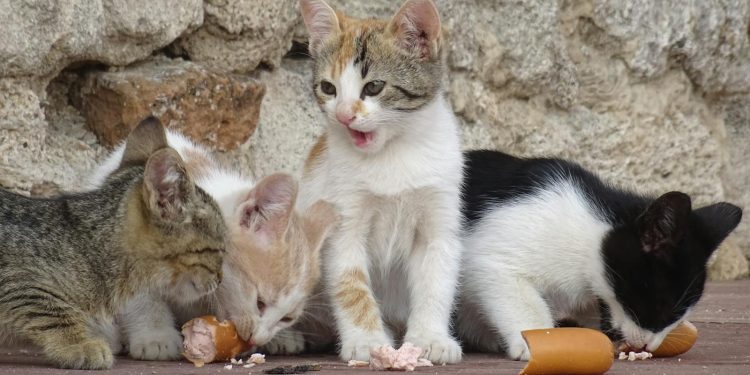Play is one of the most important aspects of a pet’s life, whether you have a curious cat or an energetic dog. For both cats and dogs, play is more than just an enjoyable activity; it plays a crucial role in their psychological well-being, physical health, and social development. Understanding the psychology of play can help us provide better care for our pets, enriching their lives in meaningful ways. This article will delve into why play is so important for cats and dogs, explore the psychological motivations behind their playful behaviors, and offer ways to encourage healthy play habits.
The Role of Play in Pet Development
Play is essential for young cats and dogs, as it lays the foundation for proper physical and mental development. For puppies and kittens, play is how they learn about the world around them. Through wrestling, chasing, pouncing, and biting, they practice important life skills that will help them navigate their environment, hunt (in the case of cats), and communicate with other animals and humans.
- Social Skills: Play teaches young pets essential social skills. When puppies wrestle with their littermates, they learn how to control the force of their bite, an important lesson in bite inhibition. Kittens learn similar lessons when they pounce on their siblings and gauge how much claw use is acceptable. These social lessons help pets interact appropriately with other animals and people throughout their lives.
- Problem-Solving: Play is also an important way for cats and dogs to develop problem-solving skills. Whether it’s a cat trying to catch a toy mouse or a dog figuring out how to open a treat-dispensing puzzle, play stimulates their minds and encourages creative thinking.
- Bonding: Play also strengthens bonds—both between animals and between pets and their owners. For dogs, playing fetch or tug-of-war with their owners reinforces trust and companionship. For cats, interactive games like using a feather wand can foster a sense of closeness with their humans.
Why Do Dogs Play?
Dogs are naturally social creatures that have evolved from pack animals. In the wild, play is a vital activity that helps young wolves practice hunting and social interactions. Domesticated dogs have retained these play behaviors as a way to bond and expend energy.
- Instinctual Drives: One of the key reasons dogs play is to satisfy their instinctual drives. Games like fetch, chase, and tug-of-war mimic hunting behaviors, allowing dogs to fulfill their need for physical activity and mental stimulation. The repetitive action of chasing a ball or playing tug stimulates the same reward centers in a dog’s brain that hunting would for their wild ancestors.
- Stress Relief: Play is an excellent outlet for stress and anxiety. For dogs that may be anxious or bored, play can provide a much-needed release of pent-up energy. Engaging in physical activities helps release endorphins, the body’s natural “feel-good” chemicals, which can calm and soothe an anxious dog.
- Social Interaction: Playtime is also a way for dogs to communicate and interact with other dogs. Dog parks are a prime example of how dogs use play to establish social hierarchies, communicate boundaries, and learn what is acceptable behavior among their peers. Play bows, where a dog lowers its front end while keeping its rear up, are common signals that indicate a desire to play and show that any rough behavior is meant in good fun.
Why Do Cats Play?
Cats may be more independent than dogs, but they are still driven by a need for play that is rooted in their natural instincts. For cats, play closely resembles hunting behavior, which is why they are often seen stalking, pouncing, and batting at objects.
- Hunting Practice: Play for cats is a way to practice hunting. In the wild, cats need to be efficient hunters to survive. Domestic cats retain this instinct, and play allows them to practice their skills. Toys that mimic prey, such as feather wands or small plush mice, stimulate a cat’s predatory instincts and keep them mentally engaged.
- Exercise and Stimulation: Like dogs, cats need exercise to stay healthy, and play is one of the best ways for them to get it. Cats are natural athletes, and play provides an opportunity for them to practice their agility, speed, and coordination. Interactive play also helps prevent boredom, which can lead to stress or destructive behaviors.
- Confidence Building: Shy or fearful cats can benefit greatly from play. Engaging in play can help build their confidence and provide an outlet for nervous energy. Toys that allow cats to interact at a distance, such as laser pointers or feather toys, can help timid cats engage without feeling threatened.
The Different Types of Play
Both cats and dogs engage in different types of play, each serving a unique purpose in their development and daily lives.
Social Play
Social play involves interactions with other animals or people. For dogs, this could mean a game of chase with another dog or playing fetch with their owner. For cats, social play often involves their human, using toys to simulate hunting. Social play is crucial for building bonds and developing trust.
Object Play
Object play involves toys or other items that pets can manipulate. Dogs might enjoy chewing on a durable toy or carrying around a stuffed animal, while cats might enjoy batting at a ball or pouncing on a stuffed mouse. Object play helps pets practice motor skills and provides mental stimulation.
Exploratory Play
Exploratory play is particularly important for puppies and kittens. This type of play involves interacting with new objects and environments, helping them learn about the world. Puppies may mouth various items to explore their texture and taste, while kittens might investigate new boxes or bags.
Encouraging Healthy Play Habits
To make the most of playtime for your pet, it’s important to encourage healthy play habits that cater to their specific needs and instincts.
For Dogs
- Daily Playtime: Set aside time each day for structured play with your dog. Games like fetch, tug-of-war, or hide-and-seek can provide mental and physical stimulation. Remember that dogs need a mix of vigorous physical activity and brain-challenging games to stay well-balanced.
- Interactive Toys: Puzzle toys or treat-dispensing toys can keep your dog entertained when you are unable to play with them. These toys challenge their mind and can prevent boredom-induced behaviors such as chewing or excessive barking.
- Play Dates: If your dog is social, arranging play dates with other dogs can be a great way to ensure they get enough social interaction. Always supervise these interactions to make sure they remain positive and safe.
For Cats
- Prey-Like Toys: Provide your cat with toys that mimic the movement of prey. Feather wands, toy mice, and laser pointers are great tools to get your cat moving and stimulate their hunting instincts.
- Interactive Play Sessions: Spend time each day engaging in interactive play with your cat. This helps build your bond while giving your cat much-needed exercise. Be sure to let your cat “catch” the toy occasionally to prevent frustration.
- Environmental Enrichment: Cats benefit from an enriched environment that provides opportunities for solo play. Cat trees, scratching posts, and tunnels can give your cat a place to climb, scratch, and explore on their own terms.
Recognizing When Play Becomes Problematic
While play is essential, it’s important to recognize when certain behaviors become problematic. Overly aggressive play, particularly in young dogs and cats, may indicate that boundaries need to be set.
- Play Aggression in Cats: Cats may sometimes engage in play that becomes too rough, biting or scratching in ways that are painful. If this occurs, it’s important to redirect their energy with toys and avoid using your hands or feet as playthings.
- Overstimulation in Dogs: Dogs that become overly aroused during play may start mouthing or nipping too hard. To manage this, end play sessions before your dog becomes too excited and use commands like “sit” or “down” to help them calm down.
The Human Connection: Why Play Matters for Owners Too
Playing with pets doesn’t just benefit cats and dogs—it’s good for humans as well. Engaging in play with your pet can reduce stress, strengthen your bond, and even provide a bit of exercise for you too. The mutual joy that comes from a simple game of fetch or a laser chase session is one of the purest forms of connection between pets and their owners.
Understanding the psychology of play in cats and dogs allows us to cater to their needs, ensuring that playtime is both enjoyable and beneficial. By engaging in different types of play and recognizing the motivations behind their playful behaviors, we can help our pets lead happier, healthier lives, full of fun and adventure.









Discussion about this post